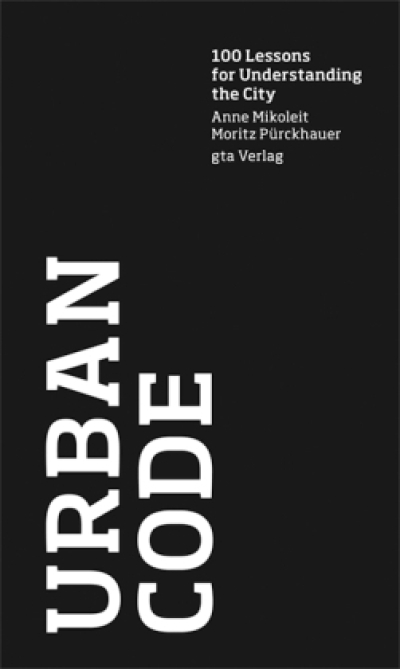
The Other Architect. Exhibition: Canadian Centre for Architecture in Montréal
Welche Art von Ansätzen erfinden und machen sich Architekten zu eigen, um ihre Ideen jenseits traditioneller Entwurfspraxis zu reflektieren? – Diese kommentierte Sammlung von Originaldokumenten mit Fallbeispielen von 1960 bis heute ist ein Beleg für experimentelle Orte, Methoden und Instrumente, die Architekten für ihre Recherche nutzen und die ihre gegenwärtigen Fragestellungen prägen. Viele davon beginnen als Improvisationen in traditionellen Formen: als Konferenzen, Bücher oder in Universitätsstudios, entwickeln sich dann aber in unerwartete Richtungen weiter. Die ausgewählten Beispiele kommen aus Archiven von Recherche orientierten Organisationen wie IAUS (The Institute for Architecture and Urban Studies ), das als 'ein Zwischending zwischen Schule und Büro' entworfen wurde, den Sommerschulvereinigungen wie ILAUD (The International Laboratory of Architecture and Urban Design), dem schwimmenden Delos Symposium und anderen provisorischen Plattformen. Im Ganzen zeigen die Beispiele, wie Architekten eine kulturelle Agenda ohne die Intervention von gebauten Formen konstruieren können. Ein Buch, das die Ausstellung 'The Other Architect' im Canadian Centre for Architecture in Montréal (27. October 2015 – 3. April 2016) begleitet.
What kinds of approaches do architects invent and appropriate to reflect on their ideas outside of traditional design practices? Considering case studies from the 1960s to today, this annotated collection of primary documents presents evidence of experimental venues, methods, and tools that architects have used to research and shape the urgent issues of their time. Many of these begin as improvisations on traditional forms like conferences, books, and university studios before developing in unexpected directions; examples come from the archives of research-based organisations like IAUS (The Institute for Architecture and Urban Studies) who created a “halfway house between school and office”, research consortia like ILAUD (The International Laboratory of Architecture and Urban Design), the floating Delos Symposia, and other temporary platforms. Together, they reveal how architects can construct a cultural agenda without the intervention of built form. A book complementing the exhibition The Other Architect at the Canadian Centre for Architecture, Montreal, 27 October 2015 – 3 April 2016.
414 pp., ca. 250 facsimiles and colour images, thread-sewn softcover, English
For as long as architecture has been reduced to a service to society or an “industry” whose ultimate goal is only to build, there have been others who imagine it instead as a field of intellectual research: energetic, critical, and radical.
But how can we produce or maintain this position?
In the history of architecture, especially since the 1960s, there has been a proliferation of experiments representing the work of architects who ventured to creatively and thoroughly rethink every aspect of the profession. Moved by a desire to contribute more substantially and more actively to the construction of a cultural agenda, they critically analyzed their roles and challenged the precepts and ultimate goals of the discipline.
From a set of varied approaches drawn from many people, places, and times, the other architect emerges: searching for different operating models, aiming for collaborative strategies, introducing strange concepts, and experimenting with new kinds of tools. The result is an ample array of possibilities: Urban Innovations Group, ILAUD (International Laboratory of Architecture and Urban Design), AMO, IAUS (Institute for Architecture and Urban Studies), CUP (Center for Urban Pedagogy), ARAU (Atelier de recherche et d’action urbaines), Architects’ Revolutionary Council, Corridart, Architectural Detective Agency, Take Part Workshop, Kommunen in der Neuen Welt, AD/AA/Polyark, Design-A-Thon, Architecture Machine Group, Forensic Architecture, Multiplicity, Art Net, Global Tools, CIRCO, Pidgeon Audio Visual, Delos Symposion, and Anyone Corporation.
Observing and analyzing these experiences can supply us with an operating manual for critically engaging with the urgent issues of our time, an unusual and hopefully compelling collection that contains many methods, tools, and ideas for new ways of defining architecture.
These investigative models represent a new approach relying equally on their proposed themes and on their sets of operating strategies, working methods, organizational structures, and financial models. These efforts left marks in letters, books, drawings, photographs, budgets, tactics for accessing resources, videos, mission statements, meeting minutes, T-shirts, boats, and buses. Reading the traces lets us begin to understand the other architect’s ingenuity and consider different ways of defining the roles and responsibilities of architecture.
Together, these experiments point beyond what architecture is toward what architecture could be, or what it already is, if we would recognize it: not just a practice that inevitably brings about the construction of an artifact, but a way of thinking and observing the present and the society in which we operate; of identifying and asking questions while marking a new territory on which to act; of looking for or inventing suitable tools; and, finally, of responding generously and concisely.
–Giovanna Borasi
The Other Architect is also a book, edited by Giovanna Borasi with contributions by Florencia Alvarez, Pep Avilés, Greg Barton, Samuel Dodd, Isabelle Doucet, Ole W. Fischer, Anna Foppiano, Kim Förster, Owen Hatherley, Larissa Harris, Alison B. Hirsch, Douglas Moffat, Whitney Moon, Pierluigi Nicolin, Kayoko Ota, Panayiota Pyla, Angela Rui, Deane Simpson, Johanne Sloan, Molly Wright Steenson, Rebecca Taylor, and Mirko Zardini. A co-publication with Spector Books, Leipzig, designed by Jonathan Hares (Lausanne and London). 416 pages and over 300 colour facsimiles of traces left in letters, books, drawings, photographs, budgets, videos, mission statements, meeting minutes, T-shirts, boats, and buses.

































































































